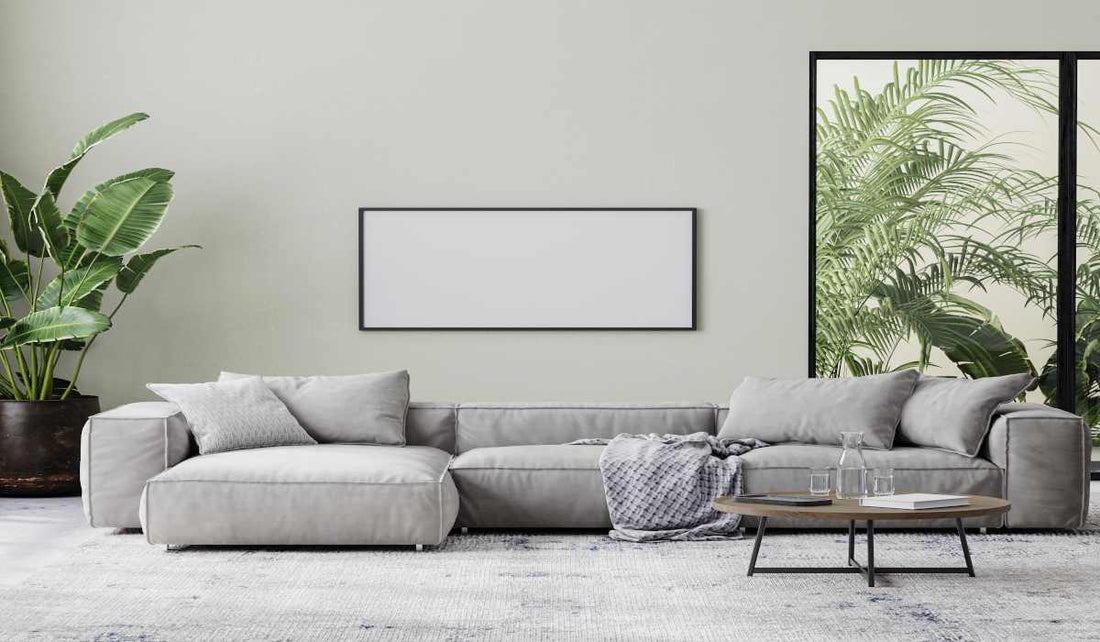
Coastal Interior Design Elements That Will Give Your Home a Tropical Vibe
Mark & DayClose your eyes and picture this in your mind: a vast and endless ocean, white sand shores, an orange sun setting on the horizon. Now, look around you. Where would you rather be? If you said you’d rather be at the beach, then you are just like the rest of us longing for a vacation that seems out of reach at the moment. Wouldn’t it be spectacular if, in the middle of the bustling metropolitan city you lived in, you could have your very own tropical getaway? Maybe it’s time you consider adapting a tropical interior design style to your home.
What will this entail? Well, the basic elements of coastal interior design are flowing fabrics, tropical foliage, light natural materials, bold colors, and components of water. All these factors tied together with Bohemian interior design create the feeling of being in a resort (even if you couldn’t be farther away from the beach).
White curtains and canopy beds

Flowing white fabric works so well at resorts because when they wave with the wind, it serves as a visual reinforcement of the coolness of the breeze. They can be hung as curtains for canopy beds or your windows. See-through fabrics work best, so they look light and cool.
White fabrics are best paired with neutral or muted colors. You can go warm with burnt orange, creams, and browns or you can go with muted blues and greens. You can also pair them with white rugs or white linens. If you want more pops of color, go for coastal-styled rugs or sheets. When choosing colors to balance out the monotony of all your white elements, don’t forget to still stick to a color palette set so it still stays in harmony. Also, take note that all your whites do not have to be the same shade or tint. It’s okay to have variations of the same color.
Incorporate tropical plants or prints of tropical plants

Different climates have different plants. If you want to feel like you’re on a tropical vacation, you should probably have tropical plants represented in your design. Perhaps you’re not the type of a person who wants to bother with the upkeep of plants. Or perhaps you don’t live in a climate that could accommodate such plants, there’s no need to fret. Prints of tropical plants will do just fine. This can be applied to something big like a mural or something small like a throw pillow with a banana leaf
If you want a more authentic feel, there are many types of tropical plants that are easy to grow indoors. Some examples are Amazon Elephant’s Ear, Dumb Cane, Kentia Palm, Orchids, Cordyline, Bird of Paradise, and Anthurium. Research how much sunlight and water each plant needs to determine if they’re well-suited to your home.
Keep your materials light, natural, and textured

Instead of heavy dark woods or slabs of marble, Coastal interior design calls for lighter and brighter materials. Furniture made of rattan or wicker is always welcome. Items made from distressed or found materials, like a coffee table made of driftwood, are also a plus. When it comes to metals, warm is better. Warm metals are gold, copper, and bronze.
Pair these light materials with neutral-colored fabrics that have a lot of texture in them for a cozy yet breezy appearance. Consider woven throws, embroidered throw pillows, or textured Bohemian rugs.
Add splashes of happy colors
Although the bases of your design should predominantly be neutral colors, bright pops of color are still welcome. Think of colors of fruit typically associated with tropical weather. Some fun colors are yellow for pineapples and bananas, pink for watermelons, or orange for papayas. It doesn’t hurt to have prints of these fruits as well to further emphasize the association. It is best to stick to one accent color and use them as accents around your home. They could be the color of your cushions, throws, a piece of art, or a lamp. Just make sure not to go overboard so the general theme of your design is still clear.
Make references to water

The best part of being at the beach is not the sand or the sun but the water. Whether it’s because you enjoy swimming, surfing, or simply listening to the waves crashing into the shore, water is the most important thing. It only stands to reason that if you are trying to emulate the beach in your interior design, you should have elements of water.
It would be great you had water fixtures like fountains or even a pool at your home, but it’s okay if you don’t. You can hang pictures of water on your walls. They don’t even have to be pictures from real life, paintings also have the same effect.
Take notes from Bohemian interior design

The overlap between Coastal interior design and Bohemian interior design is quite large. If you learn the elements of Boho decor, you are likely to get ideas for decorating your home like it’s a beach house. The main difference would be that Boho embraces color more.
One is to add a lot of plants into the mix. Next is to use distressed or unpolished furniture and materials. Next is to layer different textures on top of each other. Take note that you want to stick to more muted colors with Coastal decor. You also want to take a more minimalistic approach.


































